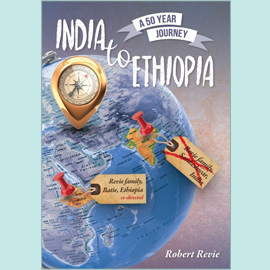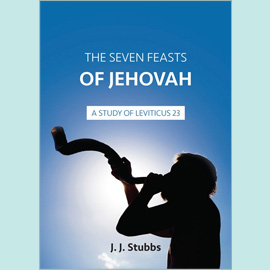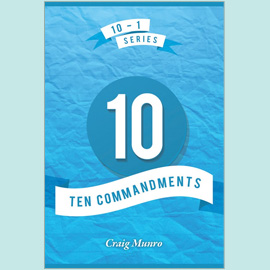I am the root and the offspring of David, and the bright and morning star (Rev 22.16)
This verse emphasises the authority of Christ. We hear the amanuensis declaring, "I John…" (Rev 1.9; 21.2; 22.8), but now we have the Author declaring, "I Jesus…". The only similar expression is found in relation to Saul’s conversion when the risen, ascended and enthroned Christ is heard to say, "I am Jesus" (Acts 9.5).
"I am the root and offspring of David", provides us with the hope of Israel; "the bright and morning star" presents us with the hope of the Church.
The root and offspring of David
The name David is the most frequently occurring name in the Bible, with over a thousand references. It first appears in the New Testament in the genealogy of Matthew at 1.1, and is finally seen in the last chapter of the last book (Rev 22.16). It is the first and last human name recorded in the New Testament. In between, we have a further fifty-six occurrences. As the root of David, Christ is David’s Lord and Maker. A similar expression is used in Isaiah: "Jesse…a Branch shall grow out of his roots" (11.1). Also note Revelation 5.5: "behold the Lion of the tribe of Juda, the Root of David hath prevailed". Here we have the deity of Christ underpinned.
As the offspring of David we have the humanity of Christ underscored. The word "offspring" is found only here and in Acts 17.28-29. It has the idea of race intrinsic in it. With Christ at its helm Israel will be a new race in a coming day. As the offspring (genus) of David, royalty is intended as well as race. Christ is King of Israel. Ezekiel’s dream was based on God’s revelation to him: "I will set up one shepherd over them, and he shall feed them, even my servant David…And I the Lord will be their God, and my servant David a prince among them" (Ezek 34.23-24).
Paul, in opening the Epistle to the Romans writes of "Jesus Christ our Lord, which was made of the seed of David according to the flesh" (1.3). To Timothy he writes, "Remember that Jesus Christ of the seed of David was raised from the dead according to my gospel" (2 Tim 2.8).
Truly, He was the Son of David, but not merely the Son of David. Having fielded all the loaded questions thrown at Him by detractors (Mt 21.23-22.22), our Lord turns the tables on them and asks a question of His own: "What think ye of Christ? whose son is he?" (Mt 22.42). They chorus, "The Son of David". The Lord then quotes David from Psalm 110, a psalm universally acknowledged as Messianic: "The Lord said unto my Lord" (v.1). Note that David spoke these words in Spirit: he was divinely inspired when he spoke them. "The Lord (namely Jehovah) said unto my Lord (namely Adonai)". Two persons in the Godhead are deep in conversation and we are privileged to listen in. God-Jehovah is speaking to the Son.
The case has been beautifully prepared and there follows the knock-out blow: "If David then call him Lord, how is he his son?" (Mt 22.45). The question was not unanswerable, but the Pharisees chose not to answer it. Whatever their reply, they would have had to concede that Christ was not only the Son of David but that He was God, David’s Lord. This they refused to do despite losing face before the public. Our Saviour silenced all the questioners that day. As the root and offspring of David, Christ is set forth as the descendant of David but also transcendent as David’s Lord, the hope of Israel.
The Bright and Morning Star
The anticipation of the Church is the focus of the remainder of the verse - "the bright and morning star", or literally, "the bright morning star".
The first mention of the singular star is in Numbers 24.17: "there shall come a Star out of Jacob and a Sceptre shall rise out of Israel". The Star is linked with royalty, ruling and reigning. The magi followed His star recognising that the One it identified was worthy of gold, frankincense and myrrh – One of royal blood.
The star is also associated with the teacher: "…they that turn many to righteousness as the stars for ever and ever" (Dan 12.3). Jude, on the other hand, calls false teachers "wandering stars, to whom is reserved the blackness of darkness for ever" (v.13). What a contrast between the two passages! Yet, the link is the teacher whether genuine or false.
The star in Revelation 22 is bright. A star gives out its own light. It is a source of light, not just a reflector of light-like planets. The light from this star is radiant and brilliant. Just before dawn it is the brightest object in the sky. It eclipses all others and is pre-eminent. This is the "morning" star. The word used here is exclusive. It means associated or linked with the dawn or daybreak. A different word is used when the morning star is promised to the overcomer at Thyatira (Rev 2.28); nevertheless, the connection is apparent between the two passages. In the one it is a promise but in the other a person. The morning star is the harbinger of day, the herald of the dawn. So Christ, after the darkness during this church era, will appear as the bright, morning star heralding the millennial day. Following the morning star, the sun arises. Similarly, as far as Israel is concerned the Morning Star will be followed by the Sun of Righteousness (Mal 4.2), with healing in His wings.
What glorious imagery, what splendid names and titles the Spirit of God through the inspired writers attributes to the wondrous Person who is our Lord Jesus Christ.
Join all the glorious names
Of wisdom, love, and power,
That mortals ever knew,
That angels ever bore;
All are too mean to speak His worth,
Too mean to set our Saviour forth.
-Isaac Watts
Concluded.









